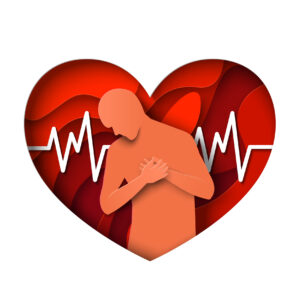
By Team Seaglass
October is Sudden Cardiac Arrest Awareness Month, a crucial time to raise awareness about the differences between a heart attack and sudden cardiac arrest (SCA), and what we can do to prevent and respond to these emergencies.
Heart Attack vs. Sudden Cardiac Arrest: What’s the Difference?
Although both a heart attack and sudden cardiac arrest involve the heart, they are not the same condition. Here’s how they differ:
Heart Attack
A heart attack occurs when blood flow to a part of the heart is blocked, usually due to a blocked coronary artery. This is often caused by a buildup of fat, cholesterol, and other substances (plaque) in the arteries. The affected part of the heart muscle can be damaged if the blood flow isn’t restored quickly.
Symptoms of a Heart Attack may include:
- Chest pain or discomfort
- Pain or discomfort in one or both arms, back, neck, jaw, or stomach
- Shortness of breath
- Cold sweat, nausea, or lightheadedness
A heart attack is a circulation issue. The heart continues to beat, but the muscle is starved of oxygen. Immediate medical intervention is critical to minimize damage.
Sudden Cardiac Arrest
Sudden cardiac arrest is a much more severe condition where the heart suddenly stops beating due to an electrical malfunction. This causes the person to collapse, stop breathing, and lose consciousness almost immediately.
Signs of Sudden Cardiac Arrest include:
- Sudden collapse
- No pulse
- No breathing
- Loss of consciousness
SCA is an “electrical problem,” meaning the heart’s electrical system malfunctions, causing irregular heartbeats (arrhythmias). Without immediate intervention, such as CPR and defibrillation, SCA can be fatal within minutes.
Prevention Tips for Heart Attack and Sudden Cardiac Arrest
While heart attack and SCA can sometimes strike unexpectedly, there are steps you can take to reduce the risk of both conditions:
- Maintain a Healthy Diet: Eat a diet rich in fruits, vegetables, whole grains, and lean proteins. Limit processed foods, sugar, and saturated fats to keep your arteries clear and reduce the risk of heart disease.
- Exercise Regularly: Engage in moderate exercise, such as walking, swimming, or cycling, for at least 30 minutes most days of the week. This can improve cardiovascular health and reduce risk factors like high blood pressure and high cholesterol.
- Manage Stress: Chronic stress can contribute to heart disease. Practice stress-relieving activities like meditation, deep breathing exercises, yoga, or spending time in nature.
- Avoid Smoking and Limit Alcohol: Smoking damages the cardiovascular system, increasing the risk of heart attack and SCA. Alcohol in excess can also lead to high blood pressure and irregular heart rhythms.
- Monitor Your Health: Regular check-ups can help catch conditions like high cholesterol, high blood pressure, or diabetes, which can contribute to heart disease if left untreated. Early management is key.
How You Can Help During Sudden Cardiac Arrest
When SCA strikes, time is of the essence. Here’s what you should do if you witness someone experiencing sudden cardiac arrest:
- Call 911 Immediately: Get emergency medical services on the way as quickly as possible.
- Start CPR: Begin hands-only CPR if you’re untrained or unsure of giving rescue breaths. Push hard and fast in the center of the chest at a rate of 100-120 compressions per minute. The beat of songs like “Stayin’ Alive” or “Baby Shark” can help you maintain the correct rhythm.
- Use an AED (Automated External Defibrillator): If available, use an AED as soon as possible. AEDs are designed to be user-friendly and give voice prompts, guiding you through each step. The AED analyzes the person’s heart rhythm and, if necessary, delivers a shock to restore a normal heartbeat.
- Continue Until Help Arrives: Keep performing CPR and using the AED until emergency responders arrive or the person regains consciousness.
Conclusion
Understanding the difference between a heart attack and sudden cardiac arrest is crucial for recognizing the signs and acting quickly. Prevention through a healthy lifestyle can reduce the risk of both conditions, but knowing how to respond to SCA can save lives. Take the time this October to educate yourself and others about SCA, learn CPR, and familiarize yourself with how to use an AED. You never know when you might be the one who can make the difference.

